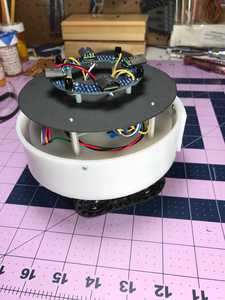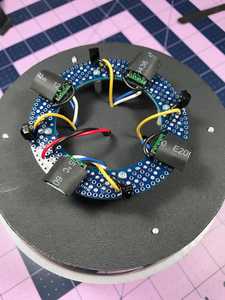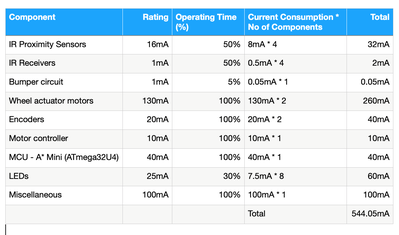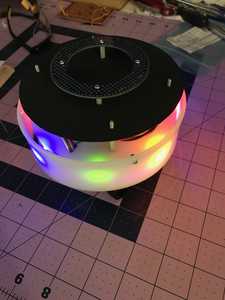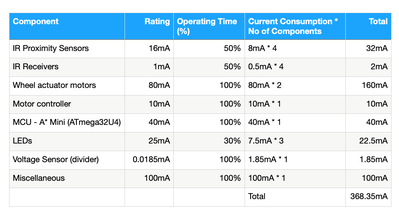Great Story about the wasps!
I read somewhere that researchers have come up with three ways that different ant species navigate. The first was by dropping pheromones along their path from the colony to a food source and back again. After doing this other ants noticed the pheromones and started following the trail and also dropping pheromones. The second was that some species count the steps they take. So apparently these researchers took a group of ants and cut the ends off of their legs and with another group they glued extensions on their legs! They found that the shorter legged ants didn’t quite make it to their goal and the longer legged ants overshot the goal. The third way was what you described with the wasps in Australia.
Tom
To err is human.
To really foul up, use a computer.
@thrandell Is it April 1 somewhere? Cut their legs off and glued onto others, really?
First computer 1959. Retired from my own computer company 2004.
Hardware - Expert in 1401, and 360, fairly knowledge in PC plus numerous MPU's and MCU's
Major Languages - Machine language, 360 Macro Assembler, Intel Assembler, PL/I and PL1, Pascal, Basic, C plus numerous job control and scripting languages.
Sure you can learn to be a programmer, it will take the same amount of time for me to learn to be a Doctor.
I read somewhere that researchers have come up with three ways that different ant species navigate. The first was by dropping pheromones along their path from the colony to a food source and back again.
I read that if there are two paths to the food the ants that take the shortest path will get through quicker and thus leave more pheromones thus computing the shortest path for other ants.
The second was that some species count the steps they take.
I first read about that in the book "How the Mind Works" by Steven Pinker.
INSTINCT AND INTELLIGENCE
"The Tunisian desert ant leaves its nest, travels some distance, and
then wanders over the burning sands looking for the carcass of an insect
that has keeled over from the heat. When it finds one, it bites off a
chunk, turns, and makes a beeline for the nest, a hole one millimeter in
diameter as much as fifty meters away. How does it find its way back?
The navigation depends on information gathered during the outward
journey, not on sensing the nest like a beacon. If someone lifts the ant as
it emerges from the nest and plunks it down some distance away, the ant
wanders in random circles. If someone moves the ant after it finds food,
it runs in a line within a degree or two of the direction of its nest with
respect to the abduction site, slightly overshoots the point where the
nest should be, does a quick U-turn, and searches for the nonexistent
nest. This shows that the ant has somehow measured and stored the
direction and distance back to the nest, a form of navigation called path
integration or dead reckoning."
I thought about how maybe a robot might leave an invisible trail or even follow one like they follow a path drawn on paper with large felt pen using black ink.
Pinker writes about the computational theory of mind vs the connectionist model and I would highly recommend it as a good easy but rich read if you are interested how brains work.
So called deep learning uses the connectionist model. I see that as "intuition". Might be a zebra. As apposed to logic (computation). It has four legs, black and white stripes and so on so it must be a zebra.
@robotbuilder Perhaps a florescent liquid laid down by a felt pen of sorts that an IR light can illuminate and a photo detector of some sort can see.
First computer 1959. Retired from my own computer company 2004.
Hardware - Expert in 1401, and 360, fairly knowledge in PC plus numerous MPU's and MCU's
Major Languages - Machine language, 360 Macro Assembler, Intel Assembler, PL/I and PL1, Pascal, Basic, C plus numerous job control and scripting languages.
Sure you can learn to be a programmer, it will take the same amount of time for me to learn to be a Doctor.
I read somewhere that researchers have come up with three ways that different ant species navigate. The first was by dropping pheromones along their path from the colony to a food source and back again.
I read that if there are two paths to the food the ants that take the shortest path will get through quicker and thus leave more pheromones thus computing the shortest path for other ants.
The second was that some species count the steps they take.
I first read about that in the book "How the Mind Works" by Steven Pinker.
INSTINCT AND INTELLIGENCE
"The Tunisian desert ant leaves its nest, travels some distance, and
then wanders over the burning sands looking for the carcass of an insect
that has keeled over from the heat. When it finds one, it bites off a
chunk, turns, and makes a beeline for the nest, a hole one millimeter in
diameter as much as fifty meters away. How does it find its way back?
The navigation depends on information gathered during the outward
journey, not on sensing the nest like a beacon. If someone lifts the ant as
it emerges from the nest and plunks it down some distance away, the ant
wanders in random circles. If someone moves the ant after it finds food,
it runs in a line within a degree or two of the direction of its nest with
respect to the abduction site, slightly overshoots the point where the
nest should be, does a quick U-turn, and searches for the nonexistent
nest. This shows that the ant has somehow measured and stored the
direction and distance back to the nest, a form of navigation called path
integration or dead reckoning."I thought about how maybe a robot might leave an invisible trail or even follow one like they follow a path drawn on paper with large felt pen using black ink.
Pinker writes about the computational theory of mind vs the connectionist model and I would highly recommend it as a good easy but rich read if you are interested how brains work.
So called deep learning uses the connectionist model. I see that as "intuition". Might be a zebra. As apposed to logic (computation). It has four legs, black and white stripes and so on so it must be a zebra.
Wow, there is so much more to life, isn't there?
I love these learning experiences!
Cheers
Thanks for sharing another relevant story… <"How the Mind Works" by Steven Pinker> You’re on a roll!
I thought about how maybe a robot might leave an invisible trail or even follow one like they follow a path drawn on paper with large felt pen using black ink.
While I was researching the type and number of sensors to add to my robots I came across a paper written by some students that implemented the pheromone trail by using a few robots to mark out a trail, almost like sign posts. So once these robots where deployed the other robots would start at one end and pass the first robot on the left side and the second one on the right side, alternating sides like that until they reached the end. At which point they did a 360 degree turn around the last robot and came back in the same way to the beginning. It’s a bit of a cheat because the robots that mark the trail were programmed to act as beacons. I guess you could think of it as a division of labor. The transport bots and the guiding bots.
My understanding of ant pheromones is that they have a lifespan, so after some amount of time the attraction fades. Which makes sense for foraging ants. It’s an interesting problem to solve.
I noticed in one of your posts that you linked to a swarm of drones and then I guess thought better of it and finally posted the BEECLUST video. Or maybe I caught your work in progress on the post. Anyway, I thought you might get a kick out of this little video “Swarmanoid, the movie”.
Tom
To err is human.
To really foul up, use a computer.
Interesting video, thanks.
Anything seems possible when you don't know what you're talking about.
My understanding of ant pheromones is that they have a lifespan, so after some amount of time the attraction fades. Which makes sense for foraging ants. It’s an interesting problem to solve.
Indeed. Perhaps alcohol could be used by a robot. It will evaporate over time with the strength of the reading being a measure of when the robot last passed that point or how many robot passed that point within an average time interval.
Anyway, I thought you might get a kick out of this little video “Swarmanoid, the movie”.
Strictly speaking a swarm of units do not have a hard coded global plan controlling their behaviours instead it emerges as a result of the i/o connections within each unit.
So in the case of the clustering of bees around some ideal temperature or light intensity the input is a contact sensor and an analogue light or temperature sensor. This controls the motor actions. There is no global plan to congregate around an ideal area that simply emerges as a result of their behaviors.
The behaviour might be very simple. For example if brighter the light the faster the velocity the emergent goal will be to spend most of the time in the dark.
An abstract example of emergent behaviour is Conway's game of Life. Start off with random on/off cells and patterns emerge. You do not have to program "gliders" they just emerge as a result of the on/off rules based on neighbouring cell values.
The neurons in a brain do not have "plans" or "desires" and so on. And yet brains do have plans and desires. All that emerges from how they are connected by genetics (evolution is akin to learning by the species) and by the environment (reconnections learning by the individual).
In the utube video example I suspect that humans are part of the system controlling how things will behave.
Looking at the video I suspect the Eye robot is using colours and shapes to detect the shelves and book. Blue is the horizontal shelf. Reddish brown is the book end or the shelf ends to be grasped.
An abstract example of emergent behaviour is Conway's game of Life. Start off with random on/off cells and patterns emerge. You do not have to program "gliders" they just emerge as a result of the on/off rules based on neighbouring cell values.
This is certainly coincidental. I’m reading the book “Bio-Inspired Artificial Intelligence” by Dario Floreano and Claudio Mattiussi, working through the chapter on Cellular Systems and what should I read today but Cellular Automata and Conway’s Life Game! Now I understand what your reference to "gliders" is all about. There is even a glider gun that emits a glider every 30 steps. Surprising results from what seem like two simple rules, i.e. his birth rule and survival rule.
Tom
To err is human.
To really foul up, use a computer.
@thrandell The problem with Conway's Game of life is there are books written about starting positions that produce repeatable patterns, I am not sure he has much to contribute to true organic swarming.l
First computer 1959. Retired from my own computer company 2004.
Hardware - Expert in 1401, and 360, fairly knowledge in PC plus numerous MPU's and MCU's
Major Languages - Machine language, 360 Macro Assembler, Intel Assembler, PL/I and PL1, Pascal, Basic, C plus numerous job control and scripting languages.
Sure you can learn to be a programmer, it will take the same amount of time for me to learn to be a Doctor.
It wasn't an example of swarming behaviour it was about emergent behaviours. It was with reference to swarms being an example of emergent behaviour.
A related thought I have on the subject is that when life emerged on this planet it wasn't just natural selection of random variations it was also based on mathematics like the game of life. I don't know if random variation and natural selection is possible in the game of life which requires inherited reproduction.
Life's Other Secret: The New Mathematics of the Living World
Ian Stewart
Well I finished my first prototype of a swarm robot. I implemented the run away behavior that Rodney Brooks has written about. The idea is that the robot senses the obstacles that surround it and calculates their ‘force’ using the inverse square law. It then determines which direction has the weakest ‘force’ and moves towards it. Eventually it sits in the middle of the room and avoids anything that moves toward it. It was fun, something I’ve wanted to do for a long time. Years ago I thought that I’d use 12 sonar sensors but I never got around to building it.
So this build was also a way for me to validate my version of a ring of IR sensors that I’ve seen on other swarm robots. The obstacle detection is working, eg. the run away behavior, and the local communication between robots I’ve tested using my hide and seek robots. I’m glad to check that one off my list.
I did a calculation of battery discharge time and I still need to find a way to ‘lighten the load’.
The screen capture looks a little hairy but I think you get the idea.
discharge time = battery capacity/average current of the robot
1000mAh/545mA = 1.83 hrs. battery life.
I did a survey of all the swarm robot designs that I could find on the web and I think that I’m going to drop the bumper and wheel encoders and add weaker motors, a buzzer, a voltage sensor and an expansion interface for additional sensors. That and a 1250mAh battery should give me close to 3 hours of battery life.
Why did I ever build a robot with less than 8 LEDs? Can you ever have too many pulsating LEDs?
Tom
To err is human.
To really foul up, use a computer.
So if the robot has no bumpers (touch sensors) or motor feedback and the other proximity sensors fail what happens? Would the machine just keep trying to drive through a wall?
Why weaker motors?
A cute visually appealing machine is always worth striving for.
Designing for a swarm application was been a paradigm shift for me. I’ve gone from thinking about designing robots that won’t get stuck in an unpredictable environment to robots in an ordered environment doing unpredictable things.
Would the machine just keep trying to drive through a wall?
As usual you’ve hit the nail on the head. The literature talks about the three benefits of swarm robotics:
- Robustness, that is, massive redundancy;
- Flexibility, no specialized hardware;
- Scalability, increasing the size of the swarm doesn’t require any change in the way the parts behave.
So if a sensor fails on one robot the swarm just carries on.
Why weaker motors?
I found the same motor with a no load performance of 120 RPM and draws 80mA. So the new component list would look like this.
A 1250mAh battery gives me about 3.38hrs of battery life. Which is what I'm looking for.
Tom
To err is human.
To really foul up, use a computer.


